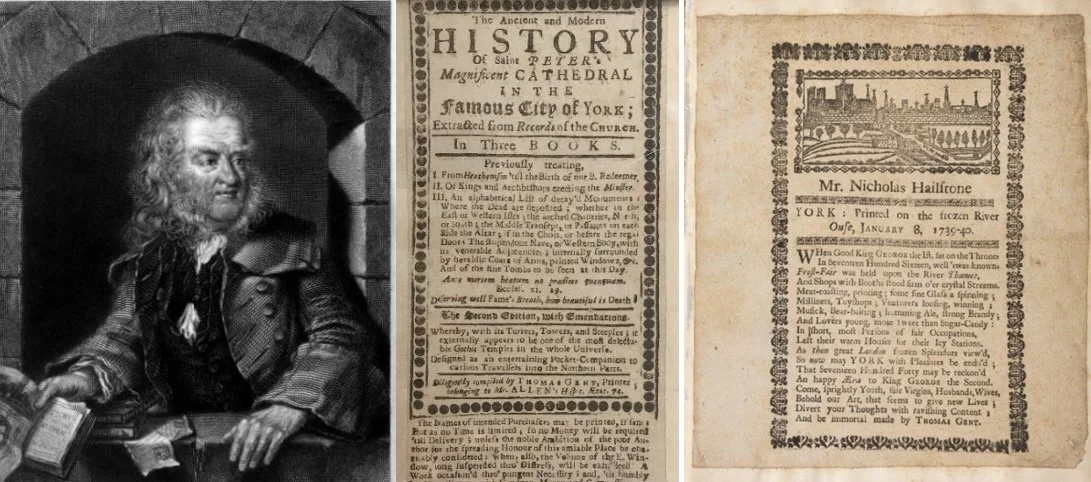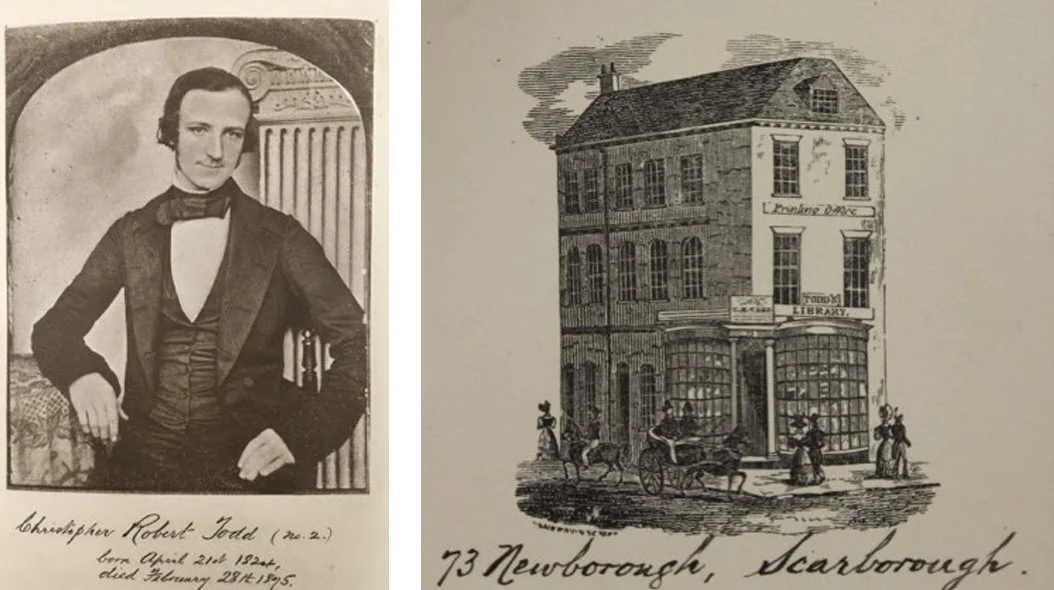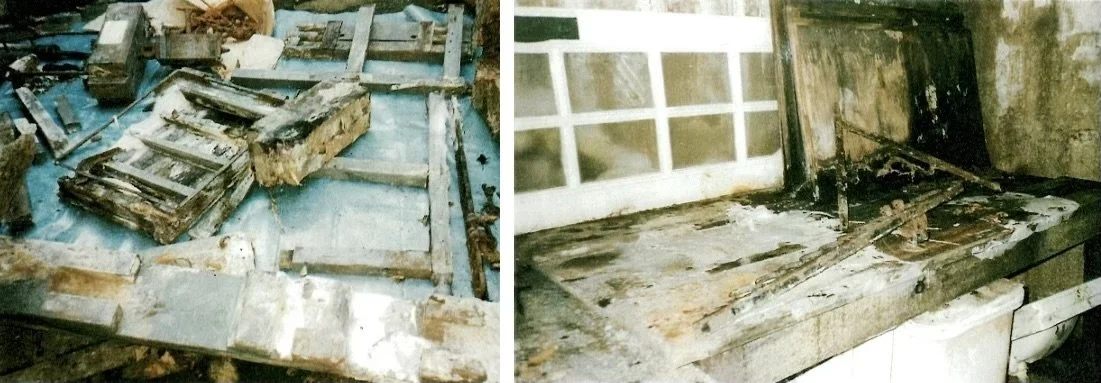The printing press that wouldn’t sit still
Wooden common presses once stood at the heart of European knowledge-making. They democratised access to ideas, transformed economies, and fuelled cultural revolutions. Yet, paradoxically, because they were once mass-produced, most have vanished—broken down, recycled, or simply replaced by iron presses during the Industrial Revolution. Today, very few survive.
Among them is the printing press associated with York printer Thomas Gent (1693–1778), a long-lived machine that was never meant to survive, but somehow did.
An image of Gent’s press in Coffee Yard (1761), and Coffee Yard in 2019 (Rebecca Rochat)
A Press on the Move
Despite its size, the press never stayed put. It began its working life in York, where Gent used it to print works ranging from his Antient and Modern History of York (1730), mathematical enigmas, York’s earliest newspapers, and even alleged Robin Hood ballads. During the Great Frost of 1739, he even printed on the frozen River Ouse.
Engraved portrait of Thomas Gent; Title-page from The Ancient and Modern History of Saint Peter’s Magnificent Cathedral (photograph by Rebecca Rochat); Gent’s souvenir handbill, courtesy of the Chapter of York.
By the late 18th century, the press had reached Scarborough, brought by traveling actors to print their playbills. It later became central to the Todd family business, printing the Scarborough Weekly Advertiser and theatrical posters for the Theatre Royal. In 1869, it moved again to Leeds, where it was already described as a “curiosity” from a bygone era.
Portrait of Christopher Robert Todd “No 2”. Scarborough Museum Trust Archives, EPH 19.1; Printing shop at 73 Newborough Scarborough. SMT Archives, EPH 19.1 2010.623.
A Fragile Survivor
Time, however, has not been kind. The press suffered water damage, rot, corrosion, and infestation. By the early 2000s, conservators concluded it was “beyond repair.” Today, only fragments survive in the collections of Scarborough Museums Trust.
These images show Gent’s press in the 1970s (Gaskell), and its condition in 2022 (Rebecca Rochat).
Conservation state of Gent’s press in 2002, SMT Archives, EPH 19.1.
Thanks to 3D modelling and photogrammetry, the surviving fragments have been carefully documented. In the digital model, some elements are rendered as full 3D reconstructions alongside the photogrammetry data, preserving the press while opening new ways to explore its history.
A StoryMap for a Travelling Press
To bring this hidden journey to life, a digital StoryMap has been created that follows the Gent press’s travels across Yorkshire. From York Minster to Scarborough’s Theatre Royal, the map layers places, events, and archives into one interactive journey.
Step into the map and follow the press’s footsteps through time and place.
What survives of the Gent press is not just an object, but a time capsule of Yorkshire—a witness to the shift from hand-press printing to industrial production, and a reminder that even ordinary, mass-produced objects can leave lasting cultural significance.






